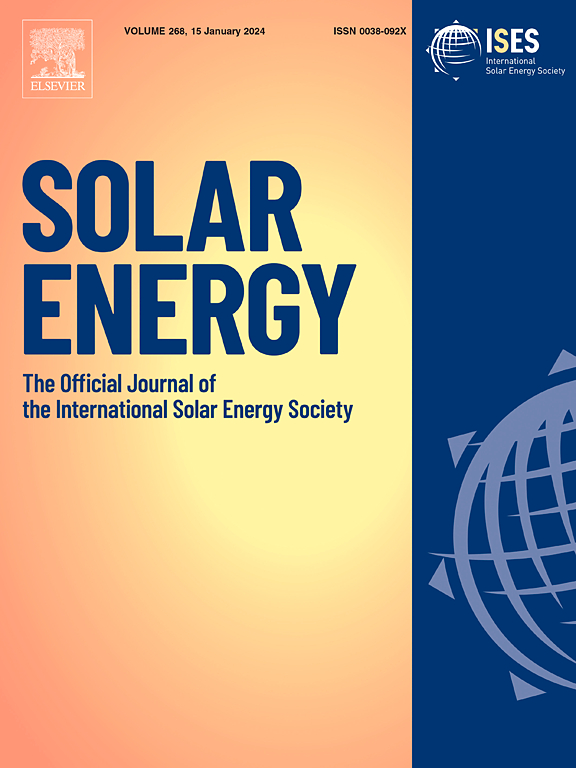Degradation rate analysis of offshore PV module applications considering climatic stresses and salinity effects
IF 6
2区 工程技术
Q2 ENERGY & FUELS
引用次数: 0
Abstract
Increasing in population density has led to increased demand and competition for land space. Therefore, floating photovoltaic (FPV) systems have emerged to exploit water surfaces instead of relying on land space. FPV modules in marine settings lose their performance quickly because they are exposed to high relative humidity (RH), temperature differences, wind speed, salinity, and ultraviolet (UV) radiation. Thus, it has become necessary to take measures to facilitate the prediction of the life of PV modules to help investors and decision-makers adopt the construction of FPV stations. This paper presents physical degradation models based on atmospheric data inputs to compare the degradation rates of offshore PV modules with those on land. To analyze the impact of climate stresses on offshore PV modules, degradation models applied to land-based PV modules are used. Moreover, to improve the accuracy of the degradation rate, particle swarm optimization (PSO) is used to evaluate the parameters of degradation models. The results confirm the validity of the adopted models by reducing the error between the actual and predicted values by ± 0.5 %. In addition, this study addresses the energy degradation rates due to the effect of salts and estimates the parameters that affect the service life expectations of PV modules. The results demonstrate that salt accumulation on offshore PV modules accelerates the degradation rate by 0.05 % and 0.13 % under salinity effect, thus reducing the lifetime of the modules from two to 3 to 5 years.

考虑气候压力和盐度影响的海上光伏组件应用降解率分析
人口密度的增加导致对土地空间的需求和竞争增加。因此,浮动光伏(FPV)系统应运而生,利用水面而不是依赖于陆地空间。海洋环境中的FPV组件由于暴露在高相对湿度(RH)、温差、风速、盐度和紫外线(UV)辐射下,性能会迅速下降。因此,有必要采取措施促进光伏组件寿命的预测,以帮助投资者和决策者采取光伏电站的建设。本文提出了基于大气数据输入的物理降解模型,以比较海上光伏组件与陆地光伏组件的降解率。为了分析气候应力对海上光伏组件的影响,采用了陆地光伏组件的退化模型。此外,为了提高降解率的准确性,采用粒子群优化(PSO)方法对降解模型参数进行评估。结果表明,所采用的模型将实际值与预测值之间的误差减小了±0.5%,证实了模型的有效性。此外,本研究还解决了由于盐的影响而导致的能量降解率,并估计了影响光伏组件使用寿命的参数。结果表明,在盐度作用下,海上光伏组件上的盐积累加速了0.05%和0.13%的降解速率,从而使组件的寿命从2年缩短到3 - 5年。
本文章由计算机程序翻译,如有差异,请以英文原文为准。
求助全文
约1分钟内获得全文
求助全文
来源期刊

Solar Energy
工程技术-能源与燃料
CiteScore
13.90
自引率
9.00%
发文量
0
审稿时长
47 days
期刊介绍:
Solar Energy welcomes manuscripts presenting information not previously published in journals on any aspect of solar energy research, development, application, measurement or policy. The term "solar energy" in this context includes the indirect uses such as wind energy and biomass
 求助内容:
求助内容: 应助结果提醒方式:
应助结果提醒方式:


